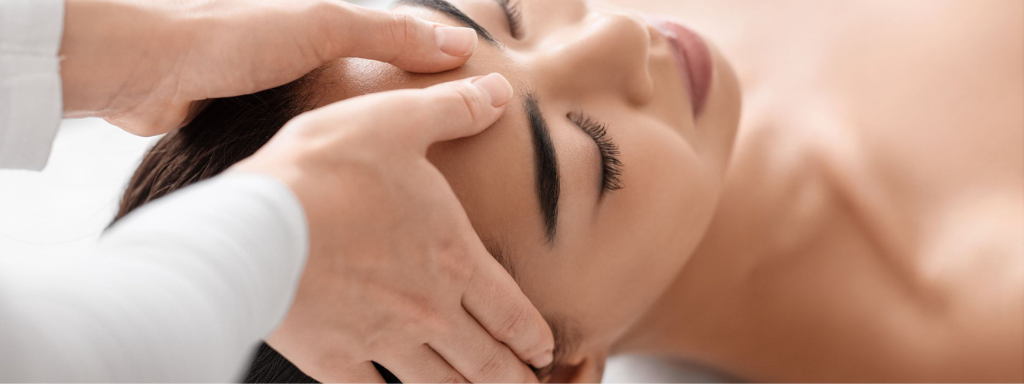
What is cranio-sacral therapy ?
Cranio-sacral therapy is a gentle manual therapy that involves applying gentle pressure along the cranio-sacral system to relieve tension and promote a return to balance and movement.
Pressure is applied mainly to the skull, face and neck, as well as along the spine, from the head to the sacrum.
The approach is practised by osteopaths and physiotherapists, but also by some massage therapists who have completed specialised training in the cranio-sacral system.
A few words on the cranio-sacral system
The cranio-sacral system is the set of structures extending from the skull to the sacrum, located at the bottom of the spine. The cranio-sacral axis includes the spinal cord, the meninges, the brain, the cerebrospinal fluid, and the various joints and membranes that connect the bones of the skull and spine
Craniosacral therapy is based on the idea that the bones of the skull are mobile (in a very subtle way) and that the cerebrospinal fluid has an internal rhythm called “primary respiratory movement”.
The therapist’s skilled hands sense the rhythm of the cerebral spinal fluid and the mobility of the cranial bones. In doing so, he or she is able to identify fluctuations in movement, as well as areas of blockage and tension. The therapist’s intervention promotes the body’s self-healing processes and thus a return to balance and mobility of the structures.
What are the benefits of cranio-sacral therapy ?
Because it is very gentle, Cranio-Sacral Therapy promotes soothing and relaxation. However, the approach can have other beneficial effects, especially on the physical level. These include
- Release of muscle tension, especially in the jaw, neck and back
- Relief from pain, including migraines and headaches
- Improved posture
- Improved quality of sleep
- Reduction of stress
Contraindications
Although Craniosacral Therapy is generally considered safe, some contraindications apply:
- Active infection
- Fever
- Presence of inflammation
It should be noted that the massage therapist always collects information from the client before beginning the session. This information is used, among other things, to identify any contraindications to the approach. In doing so, the massage therapist can, if necessary, direct the person to the appropriate medical resource or adjust the treatment accordingly to ensure safety
Course of the session
A massage that incorporates cranio-sacral therapy takes place on a massage table. The massage therapist works without oil, over clothing or directly on the skin.
The massage therapist will begin the session by gathering information about the person’s general state of health, which will allow him or her to adjust the intervention. To do this, the therapist will have the client fill out a health questionnaire and interview him or her in order to determine his or her needs, locate painful areas and identify any contraindications to cranio-sacral therapy. An observation of the client’s posture can also help the massage therapist to adapt the treatment.
Once the client is on the massage table, the massage therapist will apply gentle pressure on the bones of the skull, face and spine to identify and release areas of blockage and tension along the cranio-sacral system. The aim is to restore the rhythm of the primary respiratory movement of the cerebrospinal fluid and to rebalance the structures of the cranio-sacral system.
A treatment that incorporates cranio-sacral therapy usually lasts 60 minutes, but may be shorter for babies and children. More than one appointment may be required.

